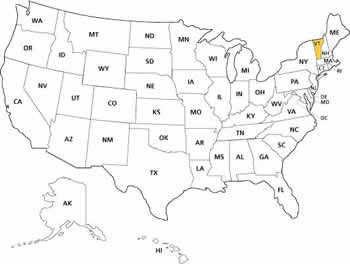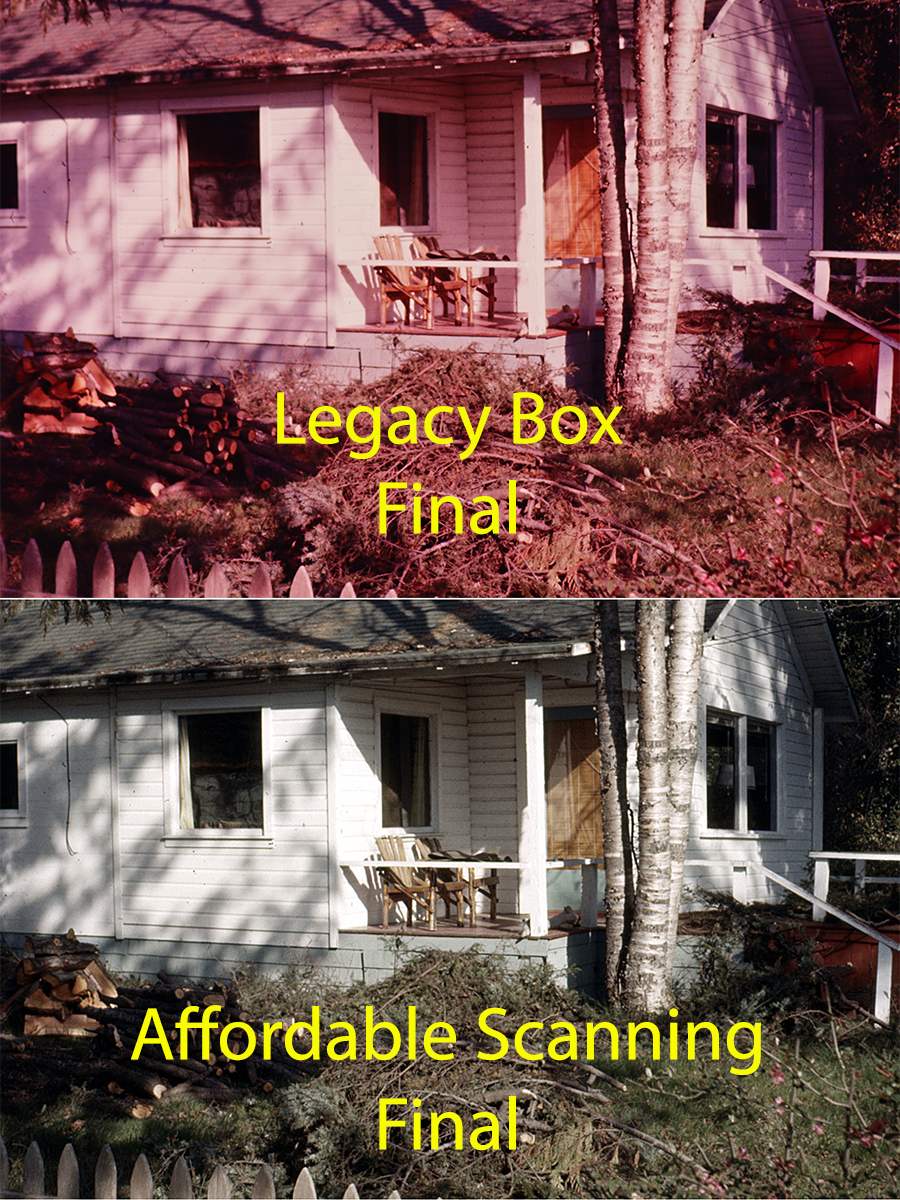Expert Slide and Photo Scanning Since 2002.
4,000 ppi Scanning and Premium Photoshop
Editing On Every Scan. 49¢ most slides.
We also can make PRINTS from your Slides.
www.Slides.Pics
Vermont 35mm Slide, Photo & Film Scanning

All Scanning companies will NOT give you the same results, Click Here.
While we do NOT have a local office in Vermont, Affordable Scanning Services LLC has provided services for customers all over Vermont, including Burlington, Rutland, South Burlington, Barre, Essex Junction, Montpelier, St. Albans, Winooski, Newport, Northfield, and the United States and Canada since 2002. In all that time we have worked with multiple people, university's and businesses with many different needs and end results. Our customers are very important to us and they are our best salespeople.
Some of the newer scanning companies, unable to compete with our services, have resorted to sending their customer's 35mm slides, photos and films to India or other third world countries. That is bad enough but what we think is really underhanded, is that they are not up front about this minor little detail. Most of their customers have no idea that their family photo collction is being loaded into a cargo plane and flown 7,000 miles over the ocean to India. And that may be the safest part of the trip.
At Affordable 35mm Slide Scanning, your job does not leave our premises,in Waupun Wisconsin, until we return ship to you. We treat your precious photo collection just like it was our own and I can tell you for certain, that we would never be sending our heirloom family photos to a thirdworld sweatshop in order to save a few dollars.
All jobs are worked by 100% USA citizens who are talented and skillful and they really are artists at heart. They work your family photos just like they were working their very own photos. We realize that this is the only time that you are going to be converting your slides and photos to digital and we are going to make it a good Experience for you.
Vermont History
"Vermont was covered with shallow seas periodically from the Cambrian to Devonian periods. Most of the sedimentary rocks laid down in these seas were deformed by mountain-building. Fossils, however, are common in the Lake Champlain region. Lower areas of western Vermont were flooded again, as part of the St. Lawrence Valley "Champlain Sea" at the end of the last ice age, when the land had not yet rebounded from the weight of the glaciers. Shells of salt-water mollusks, along with the bones of beluga whales, have been found in the Lake Champlain region.
Little is known of the pre-Columbian history of Vermont. The western part of the state was originally home to a small population of Algonquian-speaking tribes, including the Mohican and Abenaki peoples. Between 8500 to 7000 BC, at the time of the Champlain Sea, Native Americans inhabited and hunted in Vermont. From 8th century BC to 1000 BC was the Archaic Period. During the era, Native Americans migrated year-round. From 1000 BC to AD 1600 was the Woodland Period, when villages and trade networks were established, and ceramic and bow and arrow technology was developed. Sometime between 1500 and 1600, the Iroquois drove many of the smaller native tribes out of Vermont, later using the area as a hunting ground and warring with the remaining Abenaki. The population in 1500 is estimated to be around 10,000 people.
The first European to see Vermont is thought to have been Jacques Cartier, in 1535. On July 30, 1609, French explorer Samuel de Champlain claimed the area of what is now Lake Champlain, giving to the mountains the appellation of les Monts vert (the Green Mountains). France claimed Vermont as part of New France, and erected Fort Sainte Anne on Isle La Motte in 1666 as part of the fortification of Lake Champlain. This was the first European settlement in Vermont and the site of the first Roman Catholic Mass.
During the latter half of the 17th century, non-French settlers began to explore Vermont and its surrounding area. In 1690, a group of Dutch-British settlers from Albany under Captain Jacobus de Warm established the De Warm Stockade at Chimney Point (eight miles or 13 km west of present-day Addison). This settlement and trading post was directly across Lake Champlain from Crown Point, New York (Pointe à la Chevelure).
In 1731, more French settlers arrived. They constructed a small temporary wooden stockade (Fort de Pieux) on what was Chimney Point until work on Fort St. Frédéric began in 1734. The fort, when completed, gave the French control of the New France/Vermont border region in the Lake Champlain Valley and was the only permanent fort in the area until the building of Fort Carillon more than 20 years later. The government encouraged French colonization, leading to the development of small French settlements in the valley. The British attempted to take the Fort St. Frédéric four times between 1755 and 1758; in 1759, a combined force of 12,000 British regular and provincial troops under Sir Jeffrey Amherst captured the fort. The French were driven out of the area and retreated to other forts along the Richelieu River. One year later a group of Mohawks burnt the settlement to the ground, leaving only chimneys, which gave the area its name.
The first permanent British settlement was established in 1724, with the construction of Fort Dummer in Vermont's far southeast under the command of Lieutenant Timothy Dwight. This fort protected the nearby settlements of Dummerston and Brattleboro. These settlements were made by the Province of Massachusetts Bay to protect its settlers on the western border along the Connecticut River. The second British settlement was the 1761 founding of Bennington in the southwest.
The flag adopted by the Vermont Republic served originally as an infantry banner for the Green Mountain Boys, and still serves as the banner for Vermont’s Army and Air National Guard.During the eight years War, locally known as the French and Indian War, some Vermont settlers, including Ethan Allen, joined the colonial militia assisting the British in attacks on the French. Fort Carillon on the New York-Vermont border, a French fort constructed in 1755, was the site of two British offensives under Lord Amherst's command: the unsuccessful British attack in 1758 and the retaking of the following year with no major resistance (most of the garrison had been removed to defend Quebec, Montreal, and the western forts). The British renamed the fort Fort Ticonderoga (which became the site of two later battles during the American Revolutionary War). Following France's loss in the French and Indian War, the 1763 Treaty of Paris gave control of the land to the British.
The Old Constitution House at Windsor, where the Constitution of Vermont was adopted on July 8, 1777.The end of the war brought new settlers to Vermont. A fort at Crown Point had been built, and the Crown Point Military Road stretched from the east to the west of the Vermont wilderness from Springfield to Chimney Point, making travel from the neighboring British colonies easier. Three colonies, Massachusetts, New York, and New Hampshire, laid claim to the area. The Province of Massachusetts Bay claimed the land on the basis of the 1629 charter of the Massachusetts Bay Colony. The Province of New York claimed Vermont based on the early Dutch Charter to the West India Company for lands west of the Connecticut River, and the identical land granted to the Duke of York (later King James II) in 1664. The Province of New Hampshire also claimed Vermont based upon a decree of George II in 1740. In 1741, George II ruled that Massachusetts's claims in Vermont and New Hampshire were invalid and fixed Massachusetts's northern boundary at its present location. This still left New Hampshire and New York with conflicting claims to the land.
The situation resulted in the New Hampshire Grants, a series of 135 land grants made between 1749 and 1764 by New Hampshire's colonial governor, Benning Wentworth. The grants sparked a dispute with the New York governor, who began granting charters of his own for New Yorker settlement in Vermont. In 1770, Ethan Allen, his brothers Ira and Levi, and Seth Warner recruited an informal militia, the Green Mountain Boys, to protect the interests of the original New Hampshire settlers against the new migrants from New York. When a New York judge arrived in Westminster with New York settlers in March 1775, violence broke out as angry citizens took over the courthouse and called a sheriff's posse. This resulted in the deaths of Daniel Houghton and William French in the "Westminster Massacre."
Vellum manuscript of the Constitution of Vermont, 1777. This constitution was amended in 1786, and again in 1793 following Vermont's admission to the federal union in 1791.In the summer of 1776, the first general convention of freemen of the New Hampshire Grants met in Dorset, Vermont, resolving "to take suitable measures to declare the New Hampshire Grants a free and independent district." On January 18, 1777, representatives of the New Hampshire Grants convened in Westminster and declared the independence of the Vermont. For the first six months of the state's existence, the state was called New Connecticut, after the name of an existing state. During the years prior to acceptance for statehood the legislature met many times at the Cephas Kent tavern in Dorset, Vermont.
On June 2, a second convention of 72 delegates met at Westminster, known as the "Westminster Convention." At this meeting, the delegates adopted the name "Vermont" on the suggestion of Dr. Thomas Young of Philadelphia, a supporter of the delegates who wrote a letter advising them on how to achieve admission into the newly independent United States as the 14th state. Notably, at that time the states of Pennsylvania and Connecticut were in a conflict over a separate territory called New Connecticut called the Pennamite-Yankee War and Congress would not approve the disputed name for what then became Vermont. The delegates set the time for a meeting one month later. On July 4, the Constitution of Vermont was drafted during a violent thunderstorm at the Windsor Tavern owned by Elijah West and was adopted by the delegates on July 8 after four days of debate. This was among the first written constitutions in North America and was indisputably the first to abolish the institution of slavery, provide for universal manhood suffrage and require support of public schools. The Windsor tavern has been preserved as the Old Constitution House, administered as a state historic site.
The Battle of Bennington, fought on August 16, 1777, was a seminal event in the history of the state of Vermont. The nascent republican government, created after years of political turmoil, faced challenges from New York, New Hampshire, Great Britain and the new United States, none of which recognized its sovereignty. The republic's ability to defeat a powerful military invader gave it a legitimacy among its scattered frontier society that would sustain it through fourteen years of fragile independence before it finally achieved statehood as the 14th state in the union in 1791.
During the summer of 1777, the invading British army of General John Burgoyne slashed southward from Canada to the Hudson River, captured the strategic stronghold of Fort Ticonderoga, and drove the Continental Army into a desperate southward retreat. Raiding parties of British soldiers and native warriors freely attacked, pillaged and burned the frontier communities of the Champlain Valley and threatened all settlements to the south. The Vermont frontier collapsed in the face of the British invasion. The New Hampshire legislature, fearing an invasion from the east, mobilized the state's militia under the command of General John Stark.
General Burgoyne received intelligence that large stores of horses, food and munitions were kept at Bennington, which was the largest community in the land grant area. He dispatched 2,600 men, nearly a third of his army, to seize the colonial storehouse there, unaware that General Stark's New Hampshire troops were then traversing the Green Mountains to join up at Bennington with the Vermont continental regiments commanded by Colonel Seth Warner, together with the local Vermont and western Massachusetts militia. The combined American forces, under Stark's command, attacked the British column at Hoosick, New York, just across the border from Bennington. General Stark reportedly challenged his men to fight to the death, telling them that: "There are your enemies. They are ours, or this night Molly Stark sleeps a widow!" In a desperate, all-day battle fought in intense summer heat, the army of yankee farmers killed or captured virtually the entire British detachment. General Burgoyne never recovered from this loss and eventually surrendered the remainder of his 6,000-man force at Saratoga, New York, on October 17.
1790 Act of Congress admitting Vermont to the federal union. Statehood began on March 4, 1791.Battles of Bennington and Saratoga are recognized as the turning point in the Revolutionary War because they were the first major defeat of a British army and convinced the French that the Americans were worthy of military aid. Stark became widely known as the "Hero of Bennington", and the anniversary of the battle is still celebrated in Vermont as a legal holiday known as "Bennington Battle Day." Under the portico of the Vermont Statehouse, next to an heroic granite statue of Ethan Allen, there is a brass cannon that was captured from the British troops at the Battle of Bennington.
Vermont continued to govern itself as a sovereign entity based in the eastern town of Windsor for fourteen years. The Vermont Republic issued its own currency, coins from a mint operated by Reuben Harmon in East Rupert (1785-1788) and operated a statewide postal service. Thomas Chittenden, who came to Vermont from Connecticut in 1774, acted as head of state, using the term governor over president. Chittenden governed the nascent republic from 1778 to 1789 and from 1790 to 1791. Chittenden exchanged ambassadors with France, the Netherlands, and the American government then at Philadelphia. In 1791, Vermont joined the federal Union as the fourteenth state–the first state to enter the union after the original thirteen colonies, and a counterweight to slave holding Kentucky, which was admitted to the Union shortly afterward."
From:
https://en.wikipedia.org/wiki/Vermont
|
About Our Company Copyright 2024 |
|
Email: Click Here After hours you will get a quicker response by using email. We answer email at ALL hours. Telephone messages are replied to during business hours. Affordable Scanning Services LLC 400 Bittersweet Lane Waupun, WI 53963
|
 Home
Home Order Forms
Order Forms



